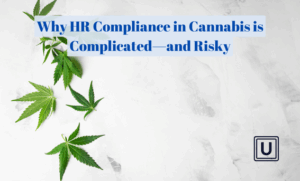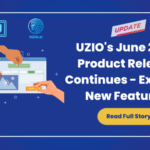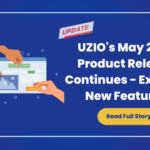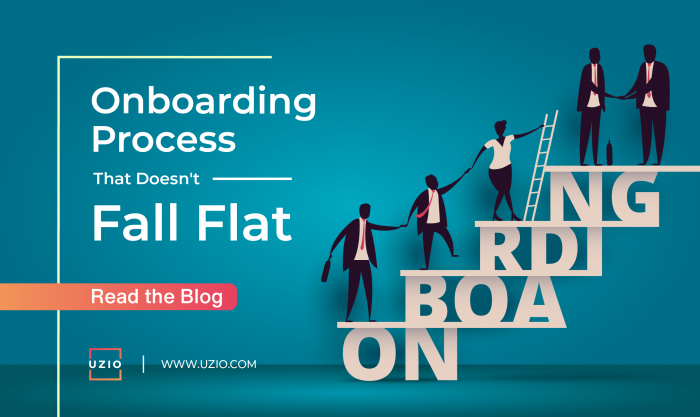
How to Create an Employee Onboarding Process That Doesn’t Fall Flat
Quick links
-
Introduction
-
Why does Onboarding Matter?
-
How to have an onboarding process that your new employees will love?
-
Challenges with paper-based onboarding process
-
Digital Onboarding: More Delighted Hires, Greater Productivity
You want your new hires to fall in love with your company, so it’s important to avoid getting off on the wrong foot.
This is why having a foolproof employee onboarding process in place is so important.
Scenario A:
You explain the entire hierarchy of your company to the new hire. After this, you give them a 20-minute rundown of their roles and responsibility, then take them directly to a cubicle and assign them a project.
Despite being given their first assignment, your new hire is left unprepared and overwhelmed right from the start.
Scenario B:
You sit your new hire down for an in-depth presentation on your company’s core mission, values, business information, hierarchy, important head functions, and any other relevant information.
Next, the new hire meets their new boss, who then introduces them to the entire team and educates them on company culture and other basic information.
Which scenario do you think would make the employee feel valued, safe, and secure in their new job?
It’s obvious—Scenario B!
Scenario B underlines the importance of a memorable and helpful employee onboarding process that makes a new hire feel like a valued member of their new organization.
Unfortunately, this approach doesn’t seem commonplace in most businesses: in fact, Gallup reported only 12% of employees strongly agreed that their organization does a great job onboarding new employees!
Why does it matter?
Starting with screening through gigantic piles of resumes, followed by filtering candidates through multiple rounds of interviews, and finally walking them through the onboarding process, the Human Resources (HR) team must be mindful of the approach they take with new hires during the first month or so.
According to Recruiting data, 1 in 4 new hires will leave their present employer within the first 180 days.
The initial first few days of any employee’s experience will have a great effect on their performance, productivity, and engagement with other team members (and the company as a whole!). If you don’t offer an excellent employee onboarding experience then you run the risk of high turnover rates & less productive teams.
You’ll definitely notice a difference in retention, and statistics compiled by O.C. Tanner, finds that 69% of employees are more likely to stay with a company for three years if they experienced great onboarding.
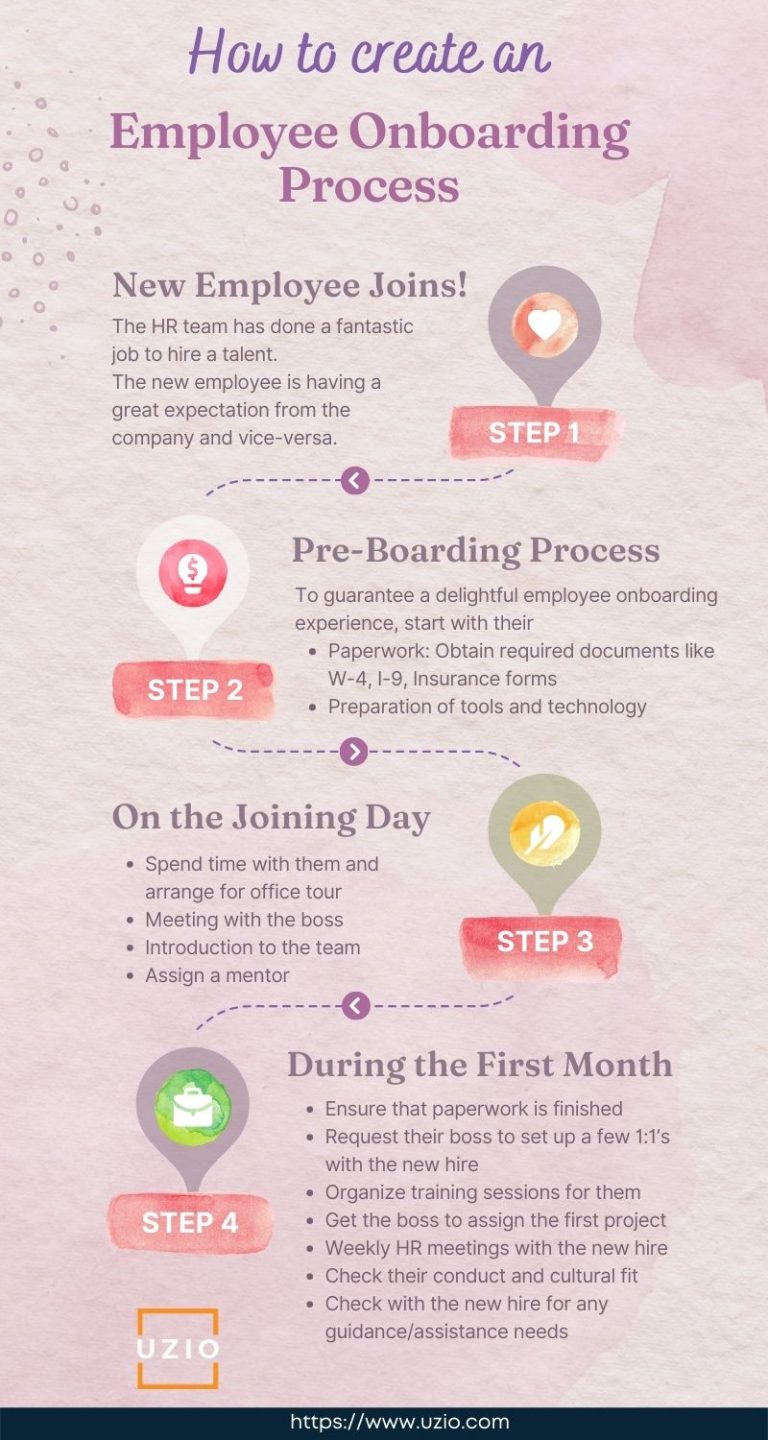
How to have an onboarding process that your new employees will love?
There isn’t a one-size-fits-all process, so onboarding will vary for each employee.
Unfortunately, it’s one of the most commonly overlooked aspects of a successful employee journey, so it’s definitely one that you will want to address. To guarantee a delightful employee onboarding experience for your new hires, you’ll need to pick the right key elements from your organization and integrate them into your process flow.
We’ve listed a few tips and suggestions for you to follow when onboarding a new employee below.
Pre-Boarding Process Flow
- Paperwork:
- Obtain required documents such as W-4, I-9, Insurance forms, Direct Deposit forms, etc., from the selected candidate
- Sign the non-disclosure agreement (NDA)
- Provide company employee handbooks as well as other relevant policies/procedures
- Inform the new hire of the general guidelines regarding office location, dress code, vehicle parking, time reporting, and the necessary documents which need to be brought to work
- Tools and technology:
-
- Get the computer prepared
- Get their company email address prepared
- Get all the required software installed
- Get a workstation prepared
On the Joining Day
According to the Society for Human Resource Management (SHRM), a new employee’s most important day on the job is their first day
- Book your calendar: Reserve some time to spend with the new hire on the office tour
- Meeting with the boss: Set up a 1:1 meeting between the boss/reporting manager and the new hire. The boss will clearly explain the role, responsibilities, success metrics, and additional expectations from the hire. They should be prepared to answer any questions the new hire might have
- Introduction to the team: Have the new hire meet their fellow team members and other functional heads that they might need to know
- Assign a mentor: A mentor can act as the new hire’s friend and have a “Welcome Lunch” with them
It’s important to understand that even after these formal meetings and office tours, the new hire may still feel awkward sitting at their new workstation alone, awaiting additional instructions. To avoid this, consider providing the new employee with written instructions that explain what’s expected of them during the beginning stages of their new role at your company. It’s also helpful (both to you and the employee) to provide them with additional reading material relevant to their role.
During the First Month
- Ensure that paperwork is finished: Make sure that all paperwork is completed and no additional documents will be needed from the new employee(s)
- Request their boss to set up a few 1:1’s with the new hire: This will help both the manager and the new hire understand each other’s working style. Beyond specifying expectations, this can also help them form a solid working relationship
- Organize training sessions for the new hire: It’s important to provide appropriate educational training sessions designed specifically for the new hires. This will familiarize the new hire with the work-related processes. It will also make the new hire feel more confident implementing their knowledge and likely increase overall productivity in the upcoming assignments
- Get the boss to assign the first project: The manager should assign the first project to the new hire after a few training sessions related to their role. This is the time to highlight the company’s performance evaluation criteria
- Weekly HR meetings with the new hire: This allows you to provide constructive criticism based on feedback from the reporting manager of the new hire and other team members that they may have worked with during their first month
- Check their conduct and cultural fit: It’s important to understand that the real culture match/fit is only revealed when the employee starts working with the team. Consider sending out a small questionnaire to the whole team that can be filled out anonymously. Use this to gain feedback about the new hire directly from the team.
- Check with the new hire for any guidance/assistance needs: It’s important to find out if the new hire has any specific training or guidance requirements that will help them exceed in their new role
We hope that this step-by-step framework has provided you with the insider tips needed to perfect your employee onboarding process. It’s important to attract top talent to your team, but engaging with and retaining them is just as crucial to running a successful business. So, with the above in mind, what’s your company’s current onboarding process look like? It is:
- 100% digital
- Mostly digital
- Mostly paper-based
- 100% paper-based
If your current onboarding process is mostly paper-based, you’re not alone! The majority of companies today rely on a paper-based process, but unfortunately, this can present them with a variety of unnecessary issues not present in a digital approach.
Challenges with paper-based onboarding process
- It feels impersonal. A traditional paper-based employee onboarding process requires extra time and paperwork. It’s not uncommon to see the new hire losing up to a week of their initial job experience because they’re busy filling out a stack of forms. This approach removes peers and managers from the onboarding process, thus making the whole ordeal feel far too impersonal.
- The experience can be overwhelming. Piles of papers that need to be filled out or read by the new hire may quickly overwhelm them (and they’re sure to find them frustrating!). A negative first impression is extremely counterproductive from a long-term employee retention perspective.
Recommended reading: How Virtual Onboarding Of Employees Can Benefit Your Business
Digital Onboarding: More Delighted Hires, Greater Productivity
Digital Paperwork
Ditch the piles of paperwork and manually-filed forms. Digital onboarding does away with these laborious tasks by utilizing an e-signature, which allows employees to quickly sign multiple documents electronically.
This saves them hours of entering the same information over and over on multiple forms, wasting valuable man-hours. An integrated HR solution that offers digital onboarding will save both you and the new hire hours of time processing forms. Best of all, all of the new hire’s information and documents will be conveniently available in one place!
Employee Digital Induction
A digital induction process will help you create tasks for each part of the new hire’s workflow. These tasks can be easily reviewed by someone outside of the HR team to make sure the new hire’s performance is up to par, and you can send out automated reminders to ensure the review is completed.
Online Payroll Processing
If your HR automation solution includes an integrated payroll system, it will automatically integrate data from the candidate’s profile. This will save the HR department hours manually copying data, allowing them to dedicate newly-freed hours to higher-priority tasks at hand.
Get in touch with us for an expert-led demo to know more about UZIO payroll services.
